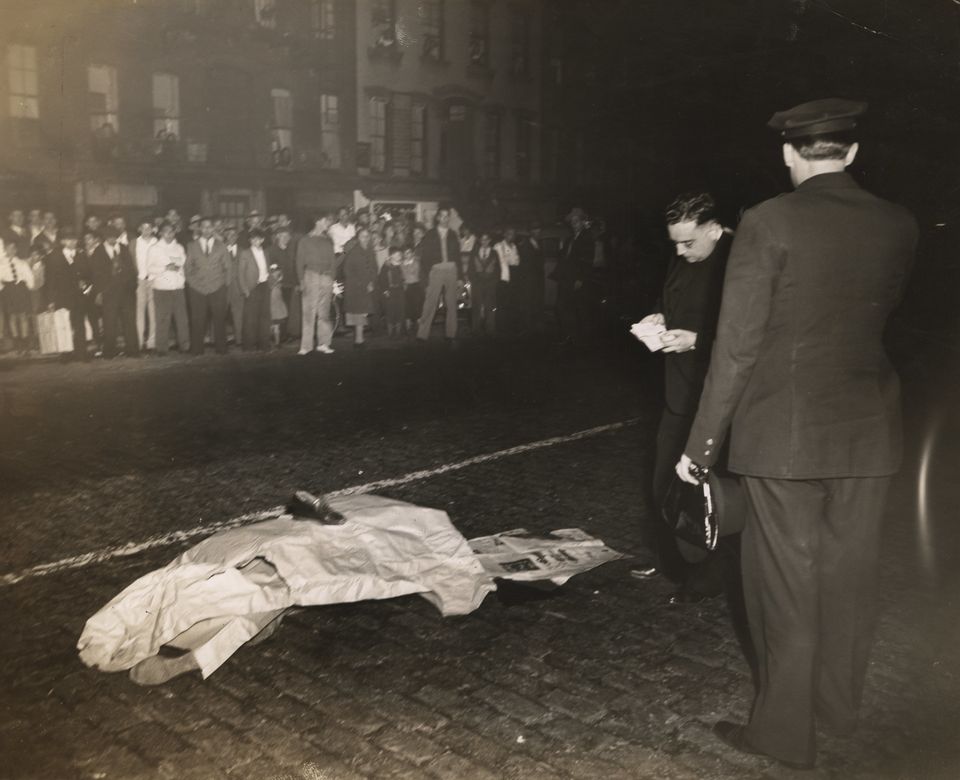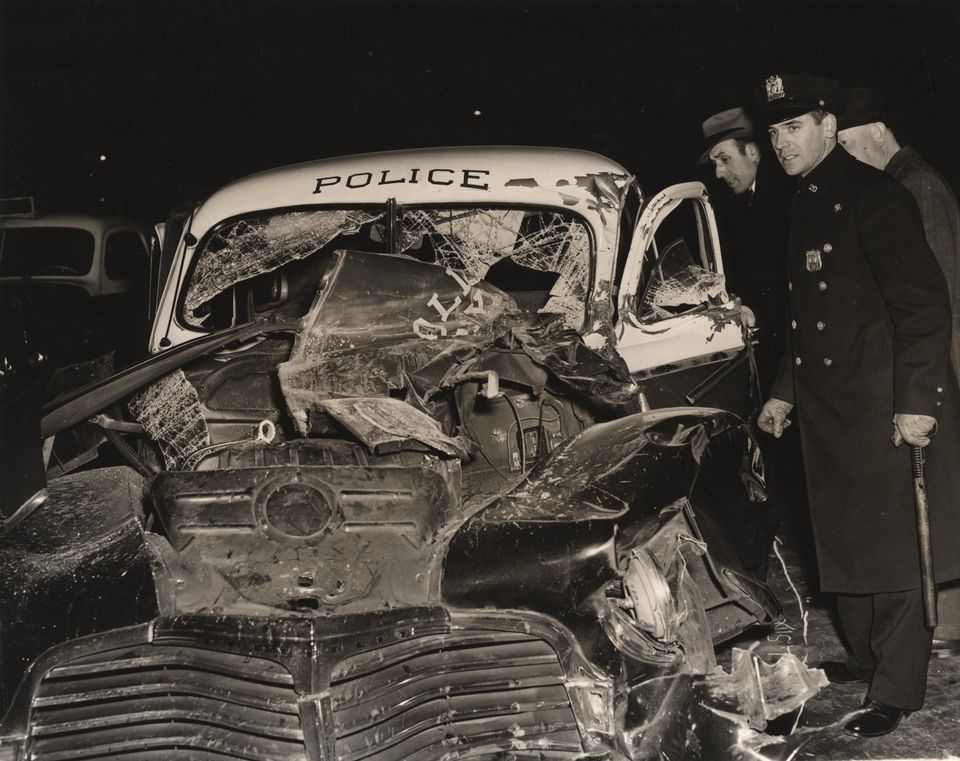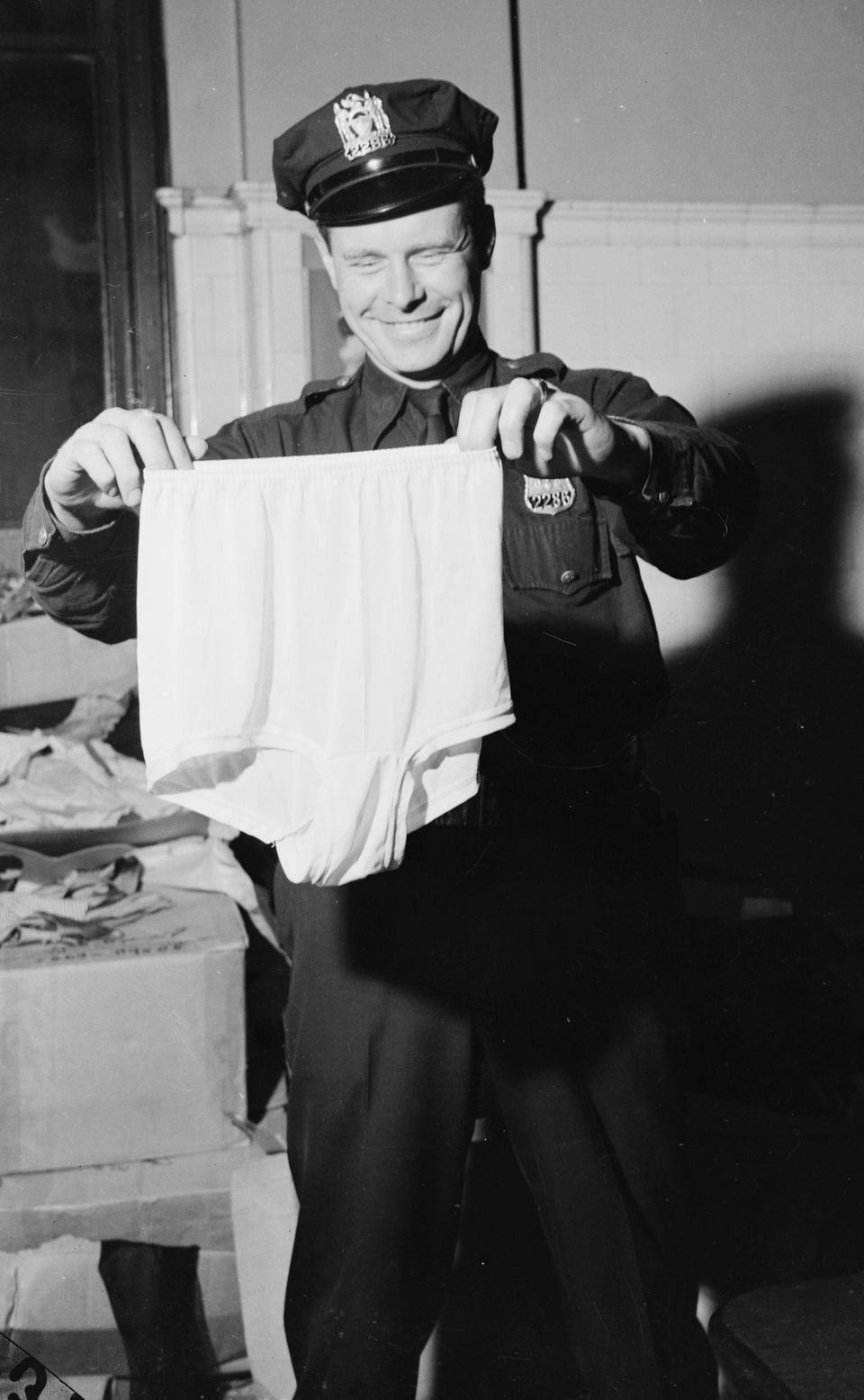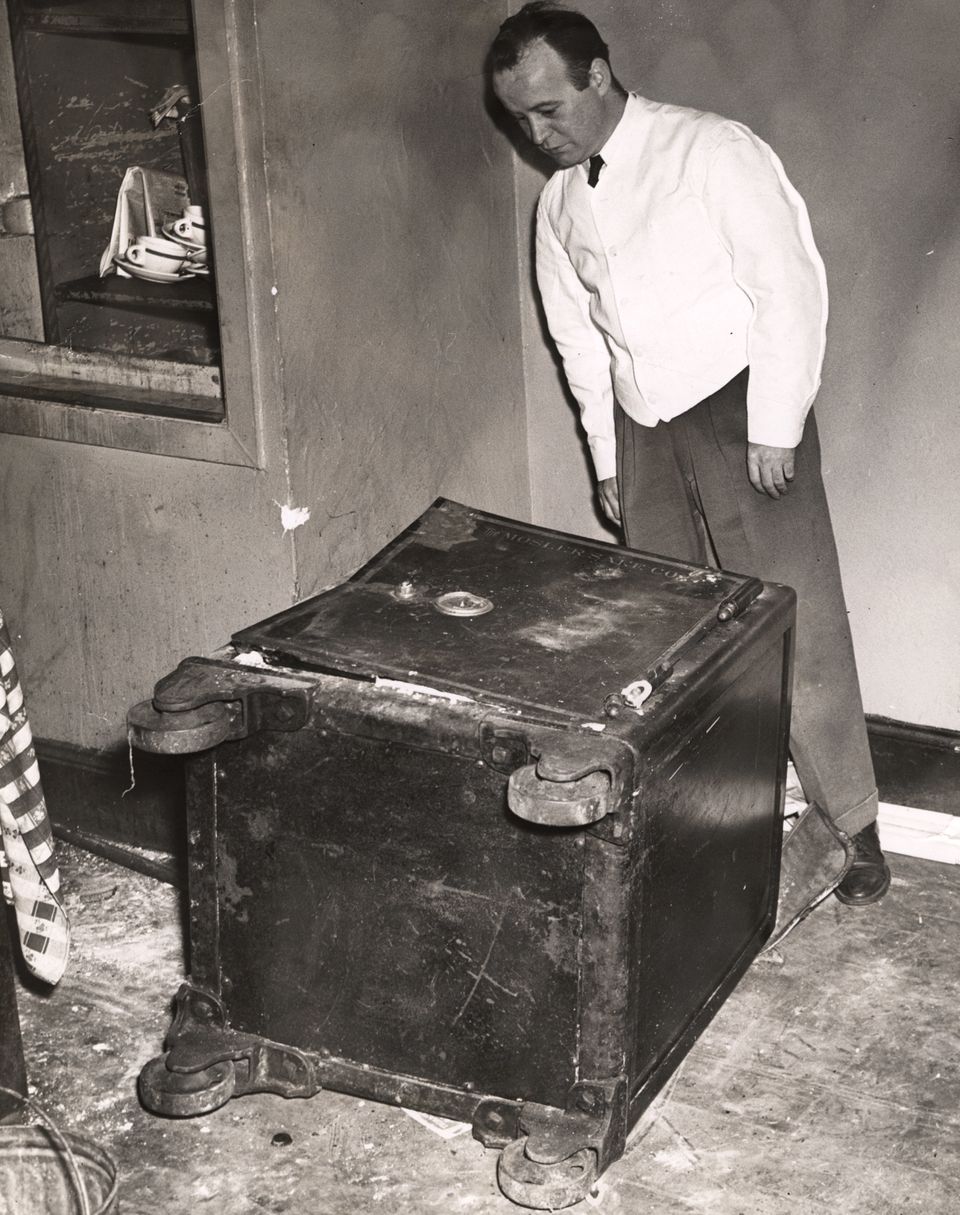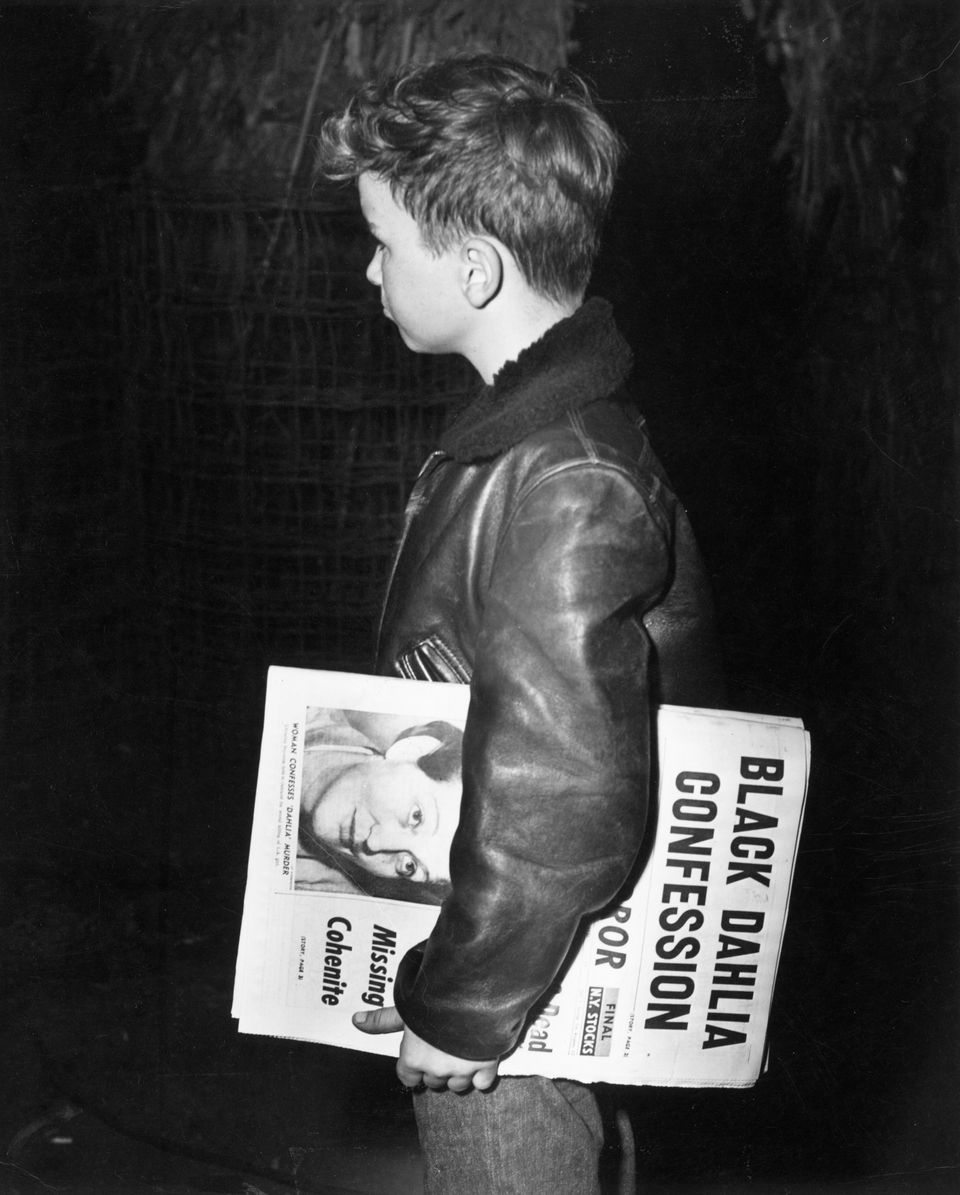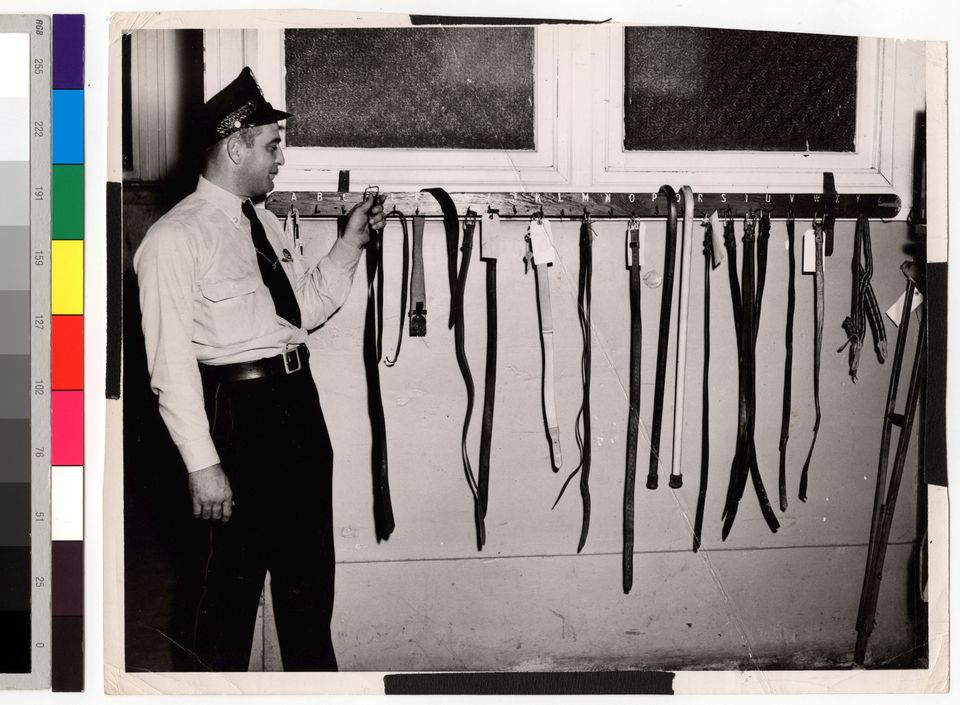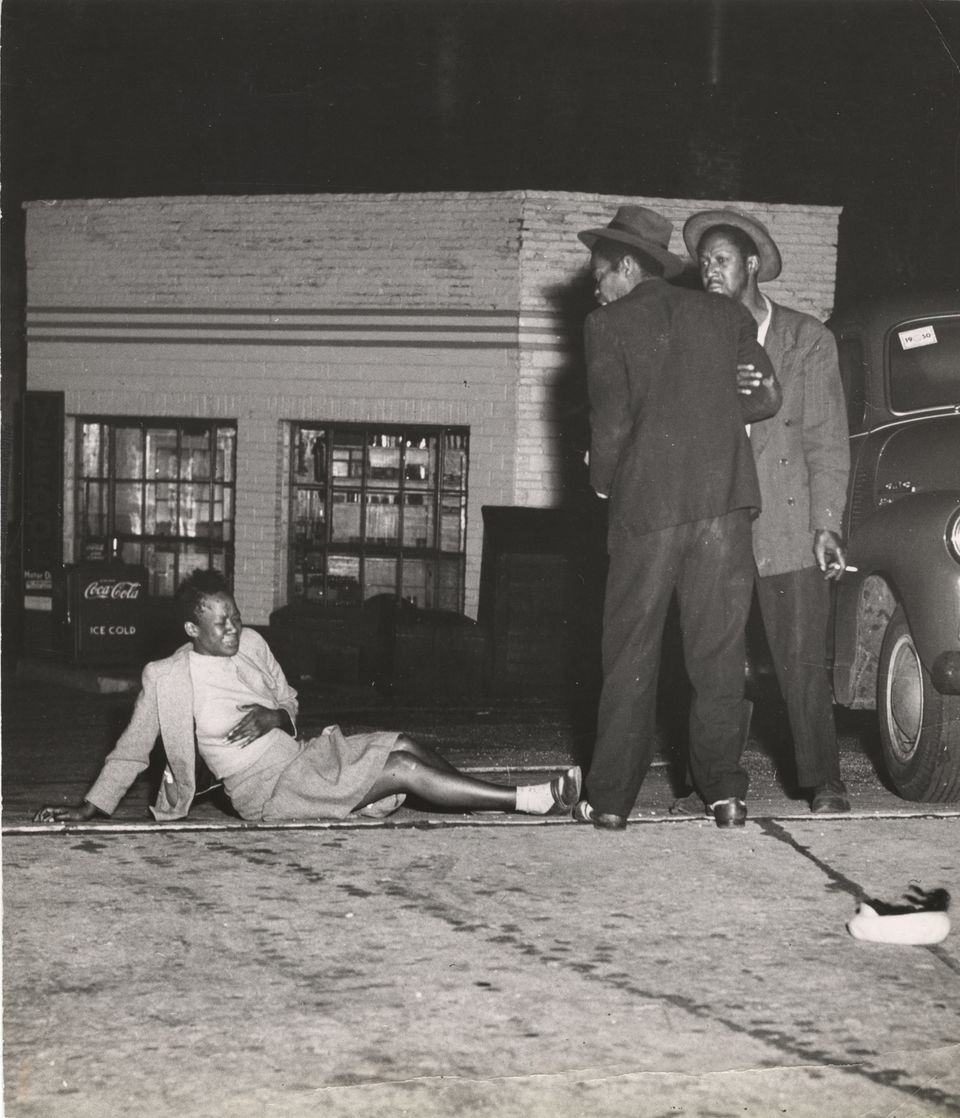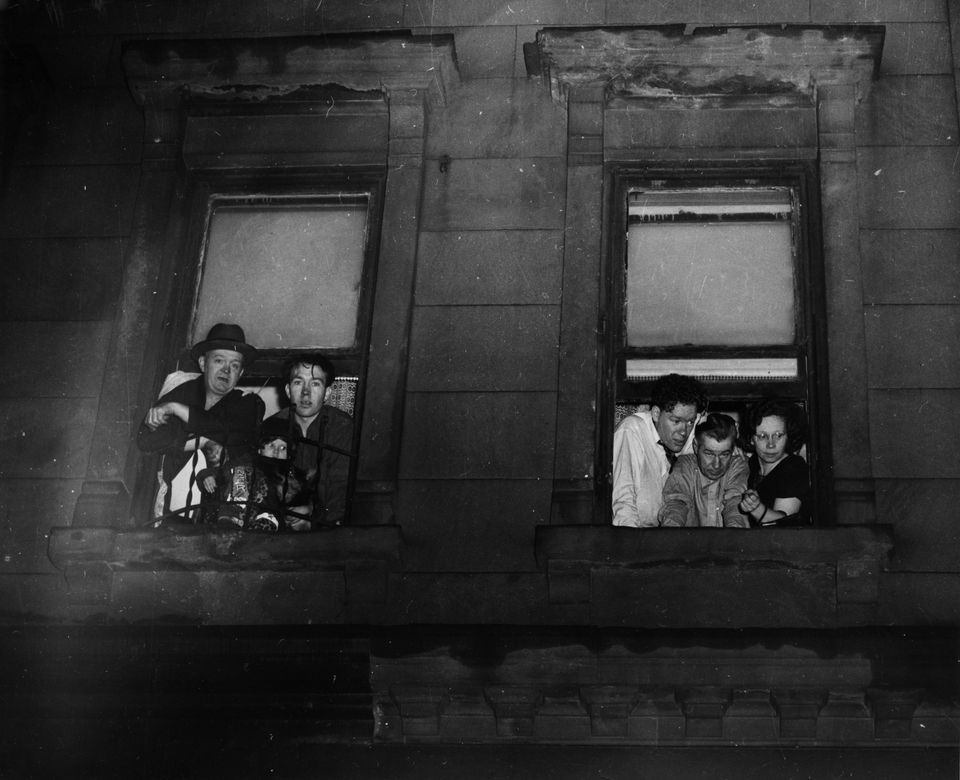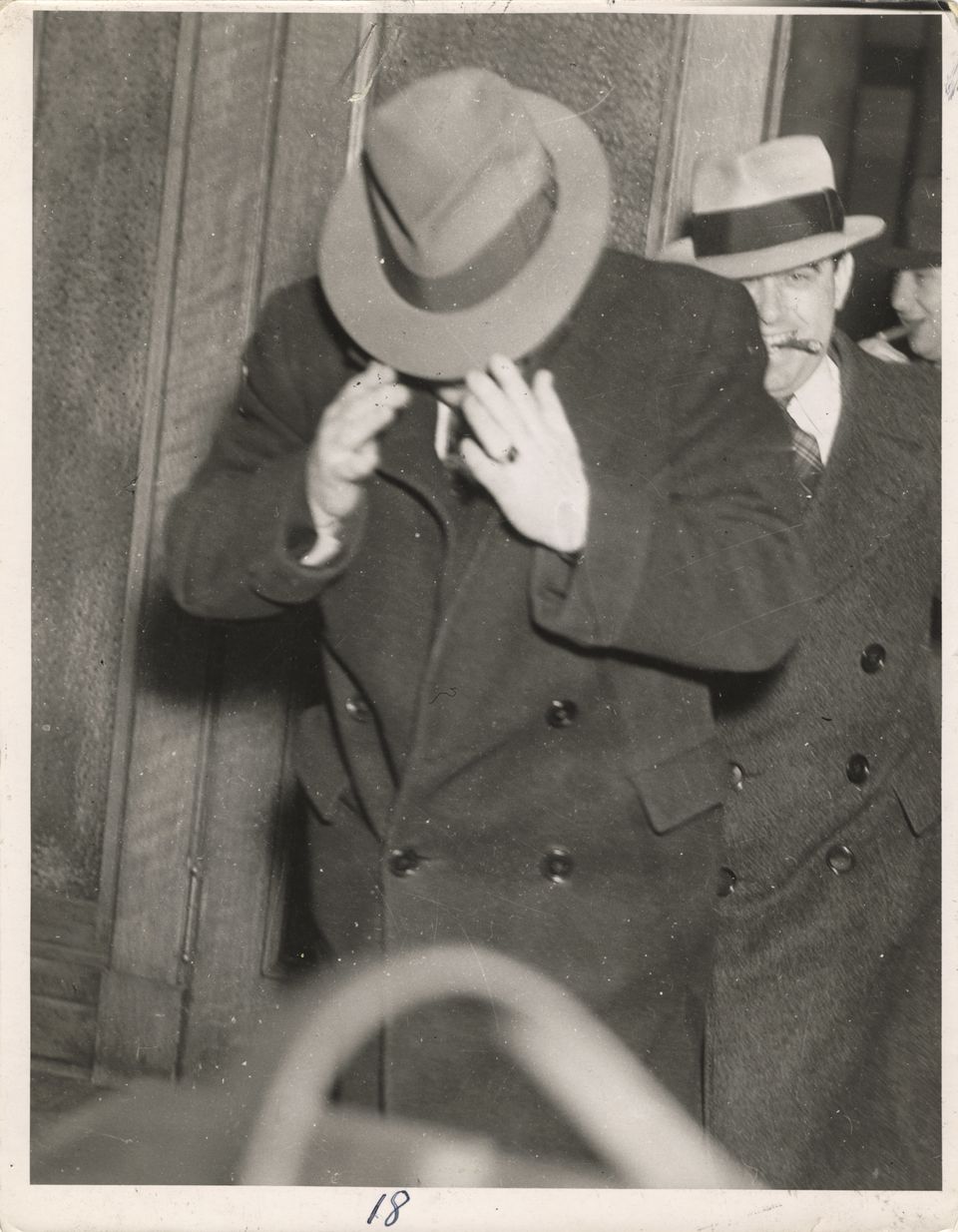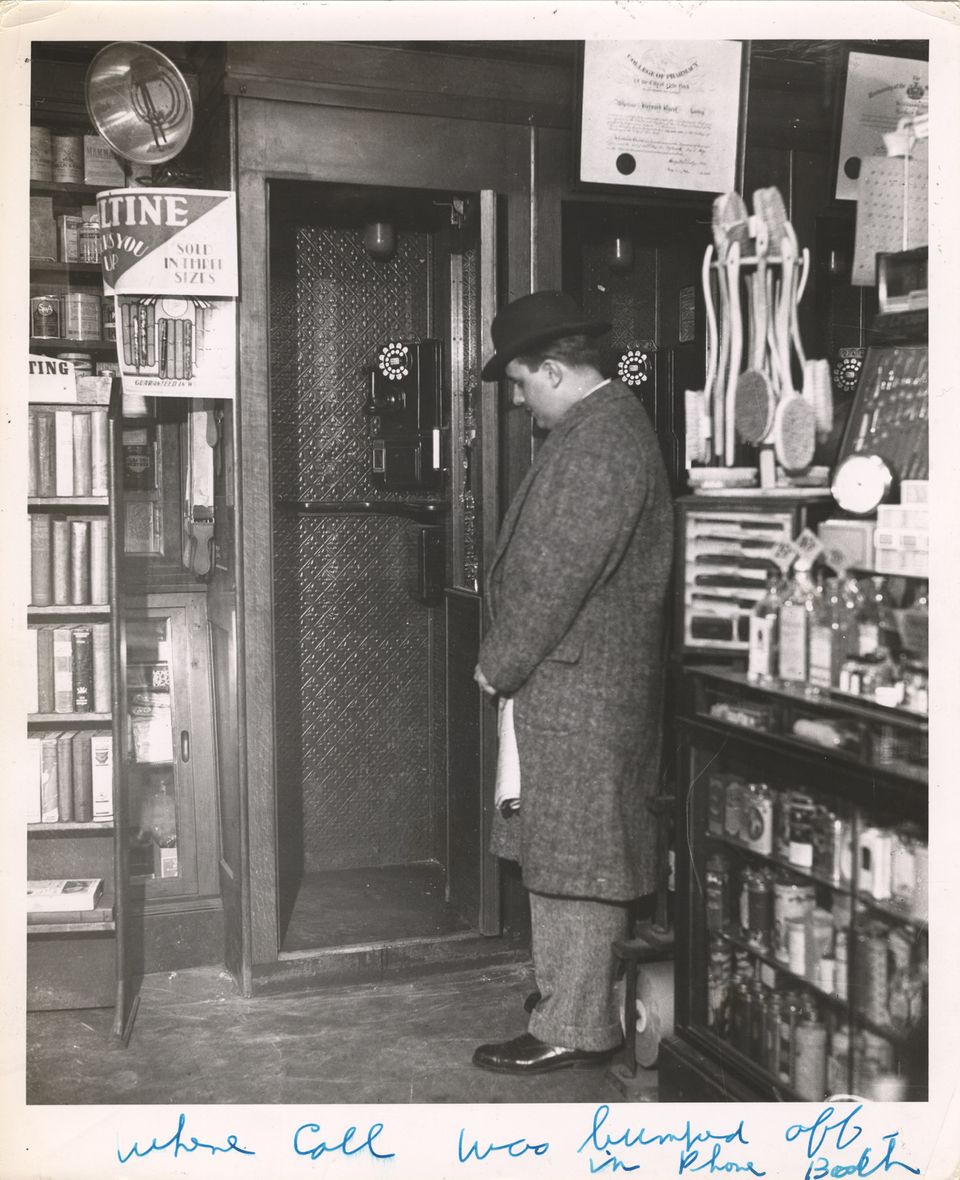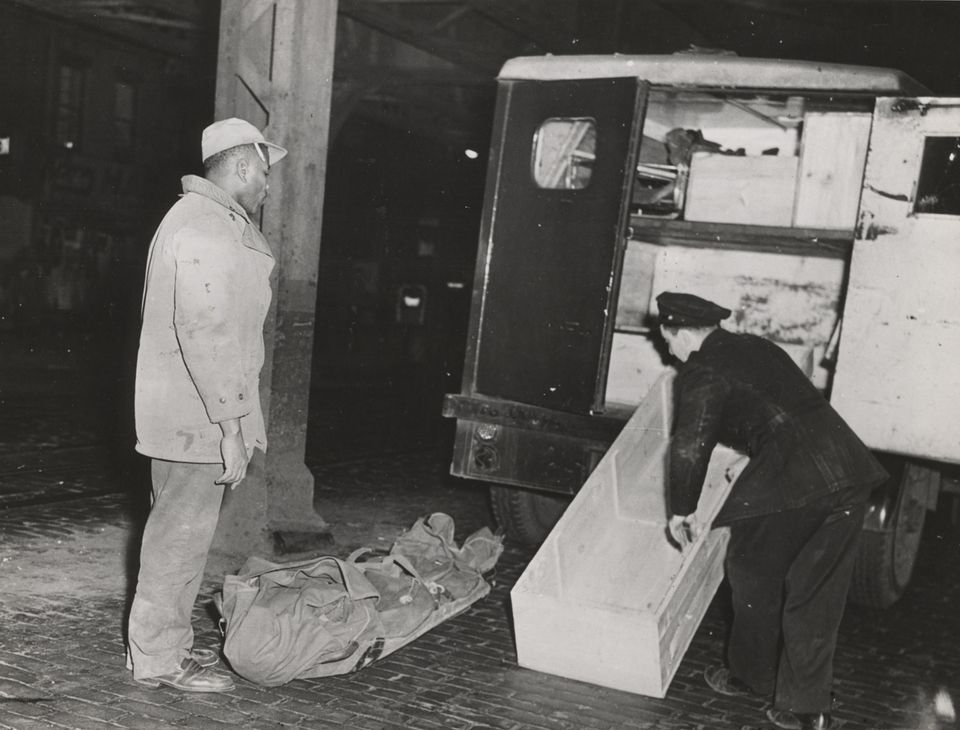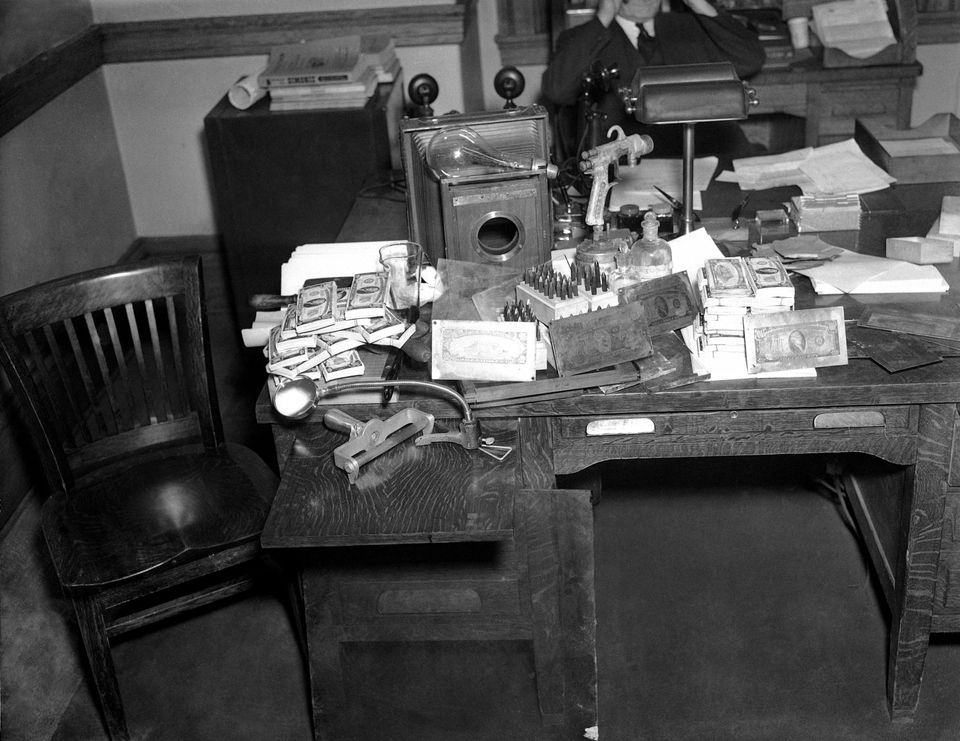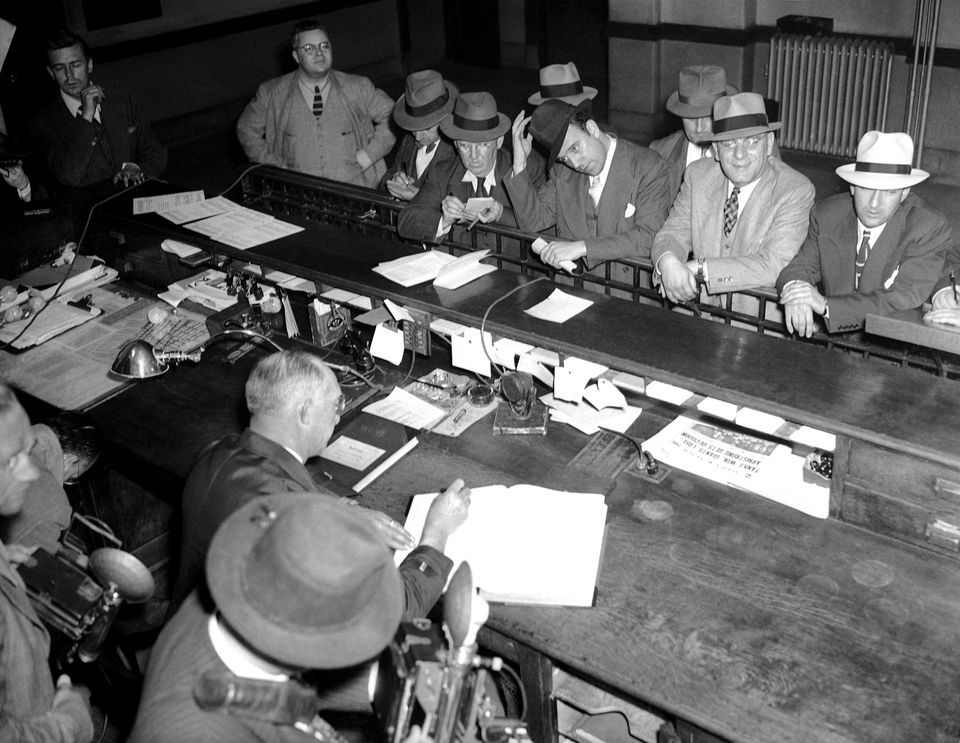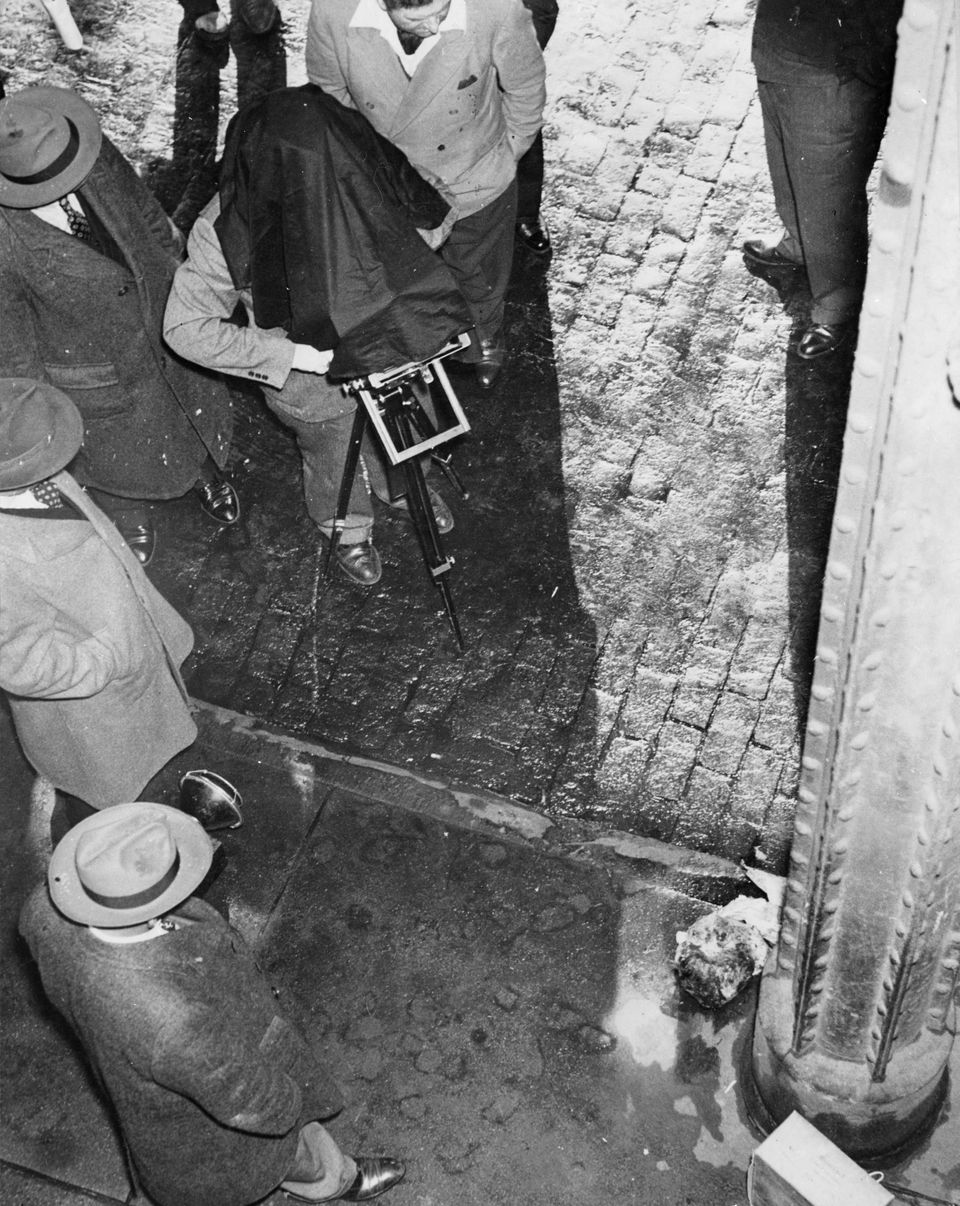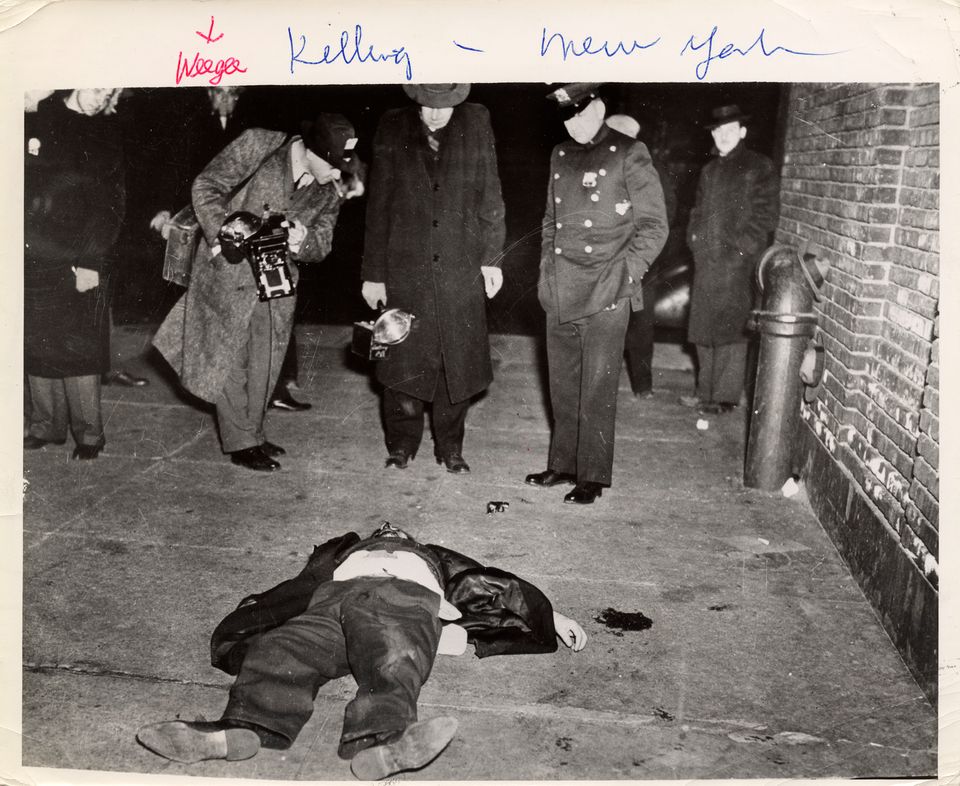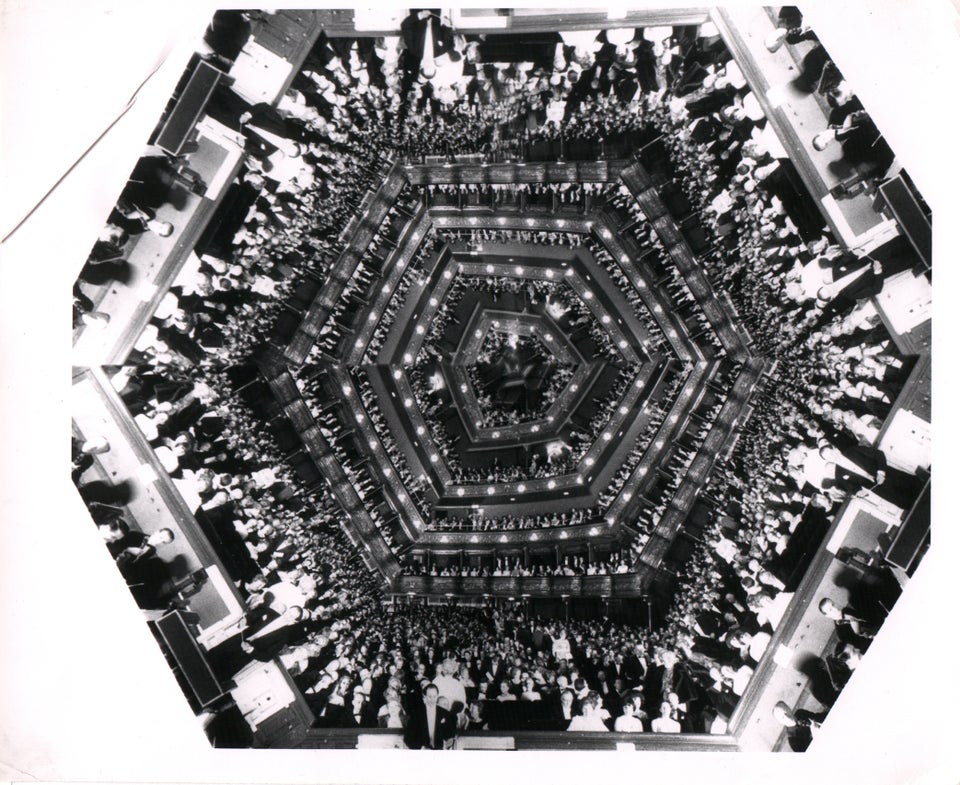On October 3, 2014, "This American Life" producer Sarah Koenig began telling a very specific story. She introduced public radio listeners to a man named Adnan Syed, who may or may not have been wrongly convicted of killing his former girlfriend, an 18-year-old Baltimore resident named Hae Min Lee, back in 1999.
The rest is... Well, you know the rest by now.
Koenig set her sights on unraveling Syed's guilty verdict, a decision that -- today, at least -- seems laced with doubt. What began as a small weekly investigation of this strange case, quickly evolved into a show with a five-million-person audience. "Serial" has since spawned countless Reddit subgroups, a new genre of podcasts about podcasts and a nearly nation-wide obsession with a crime committed 15 years ago.
As we wait for the conclusion of Koenig's podcast investigation, it's impossible not to think about America's current fascination with crime. As well as its past. We were reminded of an early 20th century icon, enraptured by the crisis and conflict of New York City's crime scenes. Arthur Fellig, or Weegee as he's pseudonymously known, was one of the most famous street photographers of the 1900s, who captured decades of violence with his stunning, monochromatic eye. He was obsessed with crime years and years before Koenig. And, probably, years and years before you.
Fellig was born in Austria in 1899, emigrating to the United States in 1910. In his early career, he spent time as an assistant to a commercial photographer and a dark-room technician, but it wasn't until 1935 that he threw himself into freelance photography. He chose to work at night, racing to the scenes of crimes to snap the first photographs of murders, collisions and thefts for newspapers across New York City.
He earned his nickname that way -- appropriated from Ouiji -- because he was nearly always the first photographer on site. He seemed to have an eerie ability to arrive before even the police. He was, in his own words, “spellbound by the mystery of murder."
Working with his signature Speed Graphic camera, his images were seedy, but captivating. One aspect of his work that set him apart was that he caught glimpses of the officers digesting evidence and the onlookers attempting to peek through barricades, all the while standing before corpses and crashes. The expressions of these people were not necessarily sensational in their own right, but the landscapes functioned as behind-the-scenes footage. All of a sudden, the viewer was privy to a police investigation, fixated not only on the tragic, almost ungraspable elements of a crime scene, but the very human qualities too.
What is the police chief thinking? What is that eye witness feeling? Even in black-and-white, it was easy to insert ourselves into his photography. We became a part of the drama.
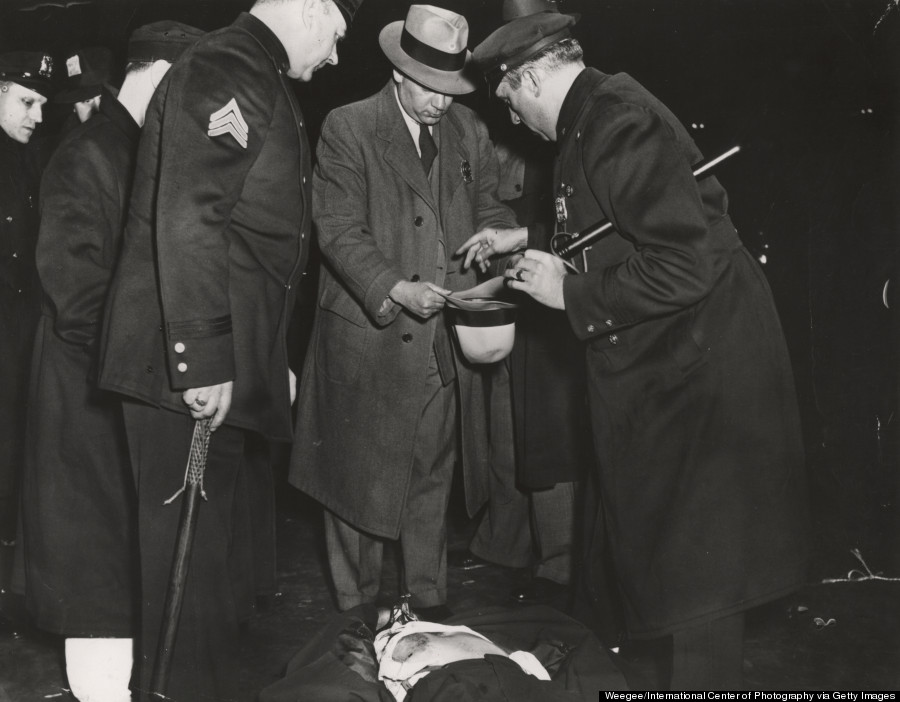
A dead man is lying on the street, as uniformed police officers, holding night sticks, and a man holding a hat stand above the dead body, New York, December 1941. (Photo by Weegee(Arthur Fellig)/International Center of Photography/Getty Images)
And isn't that, after all, what makes Koenig's "Serial" so alluring? Hasn't she, in the process of telling Syed's story, transformed millions of radio fans into self-possessed detectives? We believe, in some small way, the answers that could help put this very real, and very devastating saga to rest are within our reach. Koenig might not provide it for us, but perhaps we'll stumble upon the clues ourselves.
"For all of the work [Koenig's] done over the past year, each installment gets us no closer to a definitive truth, at least thus far," Stephanie Merry wrote in The Washington Post Blog. "That helps to explain the fanaticism."
"I feel like the story we are telling is partly what happened here, what can we find out, and part of that question is my reporting," Koenig herself explained to Vulture. "I’m in this story now, for better or for worse, as a character." And so too, it seems, are the listeners.
Later in life Weegee went on to cover the celebrity world, an ominous transition from one form of sensation to another. (Especially given the fact that "Serial" fans are not shy about their desire for a "Hollywood" ending.) He also produced a beautiful collection of abstract imagery, from nudes to kaleidoscopic figures. But his early career, and his dark body of work, is often what we can't help but remember. See a selection of that work below.
Weegee(Arthur Fellig)/International Center of Photography via Getty Images
A dead body lies on a cobblestone street covered by paper, newspaper and a shoe; police officer and perhaps a priest stand near by and a crowd watches in the background, 1940. New York, United States. (Photo by Weegee(Arthur Fellig)/International Center of Photography/Getty Images)
Weegee(Arthur Fellig)/International Center of Photography via Getty Images
A man with bandages on his face is arrested and held by a man with an American flag pin on his coat lapel, 1940. New York, United States. (Photo by Weegee(Arthur Fellig)/International Center of Photography/Getty Images)
Weegee(Arthur Fellig)/International Center of Photography via Getty Images
Two policemen were critically injured yesterday when their radio car cracked into a truck at 55th St. and Eleventh Ave. They were chasing two men who were fleeing in a stolen car after holding up a tailor shop at 446 W. 57th St. One suspect was later seized by other policemen, 1943. New York, United States. (Photo by Weegee(Arthur Fellig)/International Center of Photography/Getty Images)
Weegee(Arthur Fellig)/International Center of Photography via Getty Images
1945: A policeman holds up a large pair of knickers, found amongst some recovered stolen goods in New York. (Photo by Weegee(Arthur Fellig)/International Center of Photography/Getty Images)
Weegee(Arthur Fellig)/International Center of Photography via Getty Images
A messy shambles is visible at the scene of a burglary as the criminals left a jumbled pile of things, including clothes, coats, lamp, suitcase, telephone, radio and a Police Department No Parking sign inside a room, New York, ca.1940s. (Photo by Weegee(Arthur Fellig)/International Center of Photography/Getty Images)
Weegee(Arthur Fellig)/International Center of Photography via Getty Images
A uniformed police officer stands at the back of a police truck with two objects, perhaps dead bodies, wrapped in cloth and rope, New York, ca.1945. (Photo by Weegee(Arthur Fellig)/International Center of Photography/Getty Images)
Weegee(Arthur Fellig)/International Center of Photography via Getty Images
A man looks at a damaged safe, 'The Mosler Safe Co.' printed on the top of the safe, lying on its side; dumb waiter in the background, New York, ca.1945. (Photo by Weegee(Arthur Fellig)/International Center of Photography/Getty Images)
Weegee(Arthur Fellig)/International Center of Photography via Getty Images
circa 1947: A newspaper boy in New York City, carrying an edition with the headline 'Black Dahlia Confession'. The headline refers to the horrific murder of Elizabeth Short, found severed in two in a vacant lot near Hollywood in January 1947. (Photo by Weegee(Arthur Fellig)/International Center of Photography/Getty Images)
Weegee(Arthur Fellig)/International Center of Photography via Getty Images
A policeman displays a rack of belts hung in alphabetical order in a police station, New York, New York, 1950. Weegee entitled this image 'Policeman With Belts.' (Photo by Weegee(Arthur Fellig)/International Center of Photography/Getty Images)
Weegee(Arthur Fellig)/International Center of Photography via Getty Images
A woman grimaces while clutching her stomach, while on the ground; two men stand above her, on the street at night, New York, ca.1950s. (Photo by Weegee(Arthur Fellig)/International Center of Photography/Getty Images)
Weegee(Arthur Fellig)/International Center of Photography via Getty Images
People gather at their windows to look at a murder investigation on the street below in Hell's Kitchen circa 1955 in New York City, New York. (Photo by Weegee (Arthur Fellig)/International Center of Photography/Getty Images) *** Local Caption ***
Weegee(Arthur Fellig)/International Center of Photography via Getty Images
Crowd of people, stand around a parked car and gawk at an off-camera crime scene, New York, New York, mid 20th century. (Photo by Weegee (Arthur Fellig)/International Center of Photography/Getty Images)
Weegee(Arthur Fellig)/International Center of Photography via Getty Images
Originally entitiled 'Murder,' images shows a man who lifts up a woman, while another man holds a dog under his arm, as they all stare to the left, twentieth century. (Photo by Weegee(Arthur Fellig)/International Center of Photography/Getty Images)
Weegee(Arthur Fellig)/International Center of Photography via Getty Images
A minor witness questioned in New Jersey's Redwood murder, twentieth century. (Photo by Weegee (Arthur Fellig)/International Center of Photography/Getty Images)
Weegee(Arthur Fellig)/International Center of Photography via Getty Images
An unidentified man stands beside of a phone booth in the London Chemists drugstore (near the near 23rd Street and Eighth Avenue), twentieth century. Despite wearing a disguise, crime figure Vincent Coll, nicknamed "Mad Dog," had been shot in the booth. Coll had earned the nickname after shooting several children during the commission of a drive-by shooting of a rival. (Photo by Weegee (Arthur Fellig)/International Center of Photography/Getty Images)
Weegee(Arthur Fellig)/International Center of Photography via Getty Images
The body of Ruth Fagin Bodenheim is wrapped up in blankets lying on the cobblestone street; two men are about to put it into a wooden box and then in the back of a morgue wagon, New York, 1954. Poet, author of 10 books, and 13 novels and Greenwich Village bohemian Maxwell Bodenheim, 62, and his wife, Ruth Fagin, 35, were murdered by Harold Weinberg on the night of February 6, 1954. (Photo by Weegee(Arthur Fellig)/International Center of Photography/Getty Images)
ASSOCIATED PRESS
Equipment that was seized by Secret Service agents when three men were arrested in New York, Feb. 8, 1937. The seizure included plates and other apparatus as well as $50,000 in nearly perfect $10 bills, finished and ready for distribution. (AP Photo/Arthur "Weegee" Fellig)
AP
Fritz Kuhn (second from right in light suit), national leader of the German-American Bund, was booked at the Beach Street police station in New York, May 26, 1939, after he was brought back from a village in Pennsylvania. He was arrested en route to Chicago on charges of forgery and larceny involving $14,589 of the Bundâs funds, and was put behind bars during the night pending the police lineup. (AP Photo/Arthur "Weegee" Fellig)
Weegee(Arthur Fellig)/International Center of Photography via Getty Images
circa 1945: Polish born American photographer Weegee (1899 - 1969) photographs a human head at the scene of a murder. (Photo by Weegee(Arthur Fellig)/International Center of Photography/Getty Images)
Weegee(Arthur Fellig)/International Center of Photography via Getty Images
The noted photographer Arthur Fellig aka Weegee (1899 - 1968) holds a Speed Graphic camera, and smokes a cigar, while looking down at a dead body lying on the sidewalk, New York, ca.1938. He is standing next to another man holding a camera and a uniformed police officer; a gun is visible on the sidewalk. (Photo by Weegee(Arthur Fellig)/International Center of Photography/Getty Images)
Weegee(Arthur Fellig)/International Center of Photography via Getty Images
Polish-born American photographer Arthur 'Weegee' Fellig (1899 - 1969) peers into an opened steamer trunk that contains the bound body of a murder victim, Brooklyn, New York, August 5, 1936. The victim, identified as William Hessler, had been stabbed to death and his body put into the trunk. Apparently preparing to sink it in the Gowanus Canal, the murderers were inturrupted and abandoned it in an empty lot. (Photo by Weegee(Arthur Fellig)/International Center of Photography/Getty Images)
This article was originally published in 2014.
Support HuffPost
Our 2024 Coverage Needs You
Your Loyalty Means The World To Us
At HuffPost, we believe that everyone needs high-quality journalism, but we understand that not everyone can afford to pay for expensive news subscriptions. That is why we are committed to providing deeply reported, carefully fact-checked news that is freely accessible to everyone.
Whether you come to HuffPost for updates on the 2024 presidential race, hard-hitting investigations into critical issues facing our country today, or trending stories that make you laugh, we appreciate you. The truth is, news costs money to produce, and we are proud that we have never put our stories behind an expensive paywall.
Would you join us to help keep our stories free for all? Your contribution of as little as $2 will go a long way.
Can't afford to donate? Support HuffPost by creating a free account and log in while you read.
As Americans head to the polls in 2024, the very future of our country is at stake. At HuffPost, we believe that a free press is critical to creating well-informed voters. That's why our journalism is free for everyone, even though other newsrooms retreat behind expensive paywalls.
Our journalists will continue to cover the twists and turns during this historic presidential election. With your help, we'll bring you hard-hitting investigations, well-researched analysis and timely takes you can't find elsewhere. Reporting in this current political climate is a responsibility we do not take lightly, and we thank you for your support.
Contribute as little as $2 to keep our news free for all.
Can't afford to donate? Support HuffPost by creating a free account and log in while you read.
Dear HuffPost Reader
Thank you for your past contribution to HuffPost. We are sincerely grateful for readers like you who help us ensure that we can keep our journalism free for everyone.
The stakes are high this year, and our 2024 coverage could use continued support. Would you consider becoming a regular HuffPost contributor?
Dear HuffPost Reader
Thank you for your past contribution to HuffPost. We are sincerely grateful for readers like you who help us ensure that we can keep our journalism free for everyone.
The stakes are high this year, and our 2024 coverage could use continued support. If circumstances have changed since you last contributed, we hope you’ll consider contributing to HuffPost once more.
Already contributed? Log in to hide these messages.

